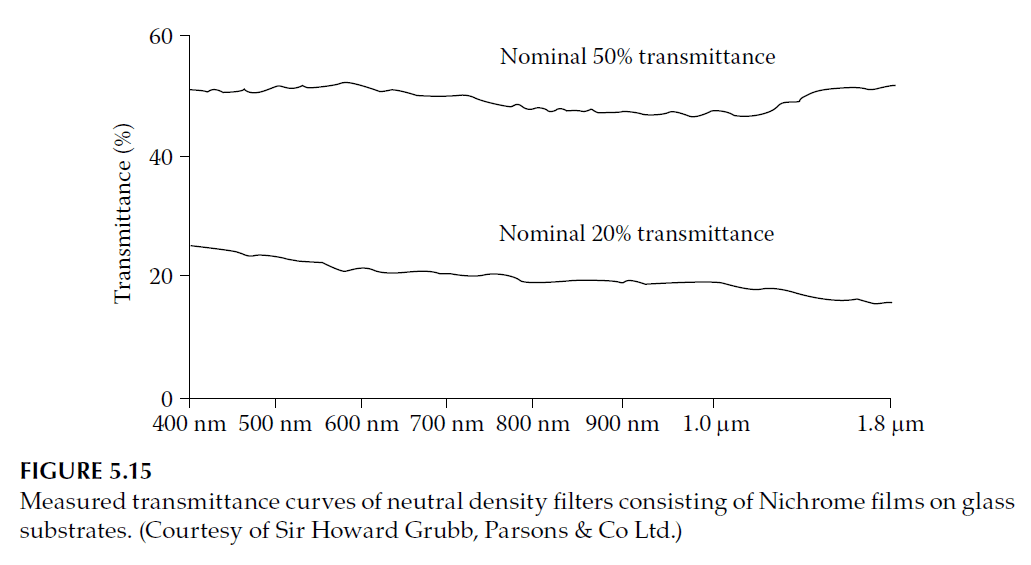Neutral-Density Filters
A neutral-density filter is designed to uniformly reduce the power of an incident light beam across a wide spectral region. These filters are commonly used in optical systems to control light intensity without altering its spectral properties.
Definition of Optical Density
The performance of neutral-density filters is expressed in terms of optical density (D):
\[
D = -\log_{10}(T)
\]
where:
- \( T = I_T / I_0 \) is the transmittance,
- \( I_0 \) is the incident irradiance, and
- \( I_T \) is the transmitted irradiance.
The logarithmic scale of optical density simplifies calculations when combining multiple filters. The total density is the sum of individual densities, provided there are no multiple reflections between filters.
Characteristics of Neutral-Density Filters
Neutral-density filters attenuate light by a combination of reflection and absorption, although absorptance is not the correct term for these filters because reflection also contributes to the attenuation.
Thin-Film Neutral-Density Filters
Thin-film neutral-density filters typically use single metallic layers with thicknesses adjusted to achieve the desired transmission values. Common materials include:
- Rhodium
- Palladium
- Tungsten
- Chromium
- Nickel-Chromium Alloy: Alloys like Chromel A or Nichrome (80% nickel, 20% chromium) are particularly effective for creating robust neutral-density filters.
Evaporation Process:
- Chromel or Nichrome is evaporated under a vacuum pressure of \( 10^{-4} \, \text{torr} \) (1.33 × \( 10^{-2} \, \text{Pa} \)) from a thick tungsten spiral.
- Filters with densities up to \( D = 1.5 \) (corresponding to 3% transmittance) are achievable.
Neutrality and Robustness
- Neutrality: These filters maintain consistent transmittance across the visible and near-infrared spectrum up to 2 μm.
- Substrates: Quartz substrates extend usability to the range of 0.24–2 μm.
- Robustness: Post-evaporation heating to approximately 200°C enhances durability. Protection layers are usually unnecessary.
Performance of Nichrome Filters
Figure 5.15 shows the transmittance response of Nichrome-based filters on glass. The filters exhibit high neutrality over the visible spectrum and the near-infrared up to 2 μm. Excessive film thickness reduces neutrality, causing higher transmittance in the red region due to chromium’s spectral properties.

In summary, neutral-density filters provide reliable, durable, and spectrally uniform attenuation for a wide range of optical applications.
